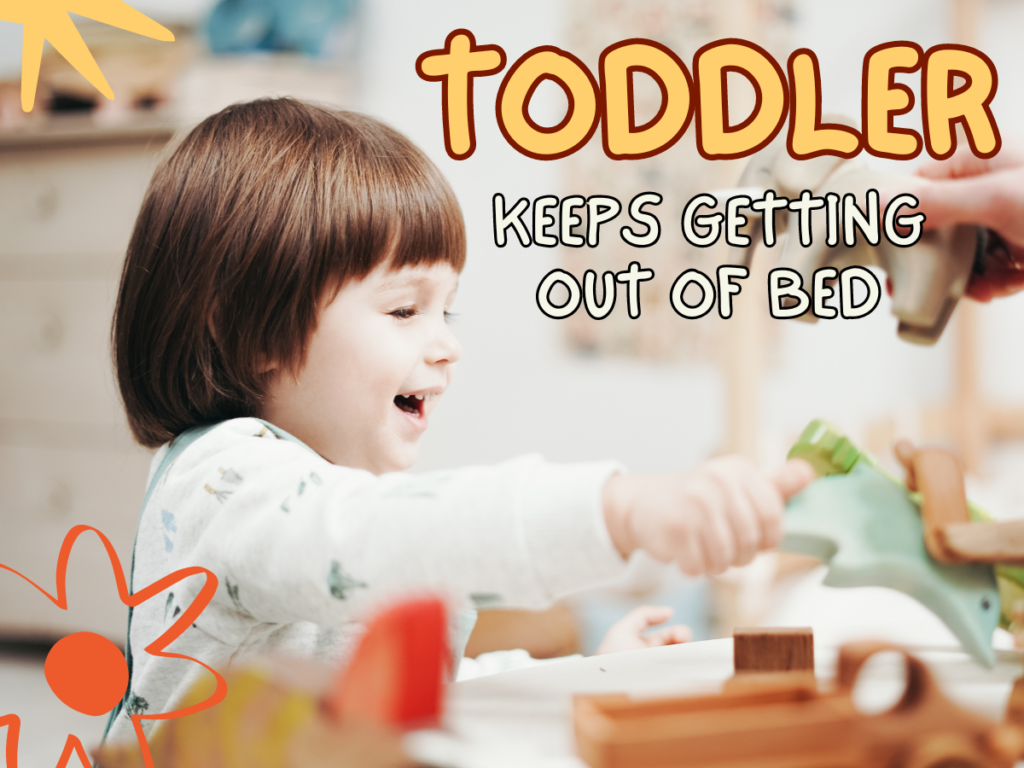Is your toddler keeping you up at night with their incessant wanderings out of bed? You’re not alone. Many parents grapple with the challenge of a toddler who simply won’t stay put when it’s time to sleep. This behavior, commonly known as “Toddler Keeps Getting out of Bed,” can be frustrating and exhausting for both parents and children alike.
Is the phrase “just five more minutes, mommy” starting to sound like a broken record at your house? If your little one has mastered the art of escaping the confines of their bed at bedtime, you’re in good company. Countless parents have faced the nightly dance of catching a wandering toddler, only to repeat the process again and again.
Quality sleep is critical for the growth and development of young children, and for parents, it’s a vital component of maintaining your sanity. In this guide, we’ll dig deep into why your toddler might be resisting bedtime and share a curated set of strategies to ensure everyone gets the rest they need.
Contents
Understanding the Behavior
Toddlers are a bundle of energy and curiosity. At this stage, they’re learning about independence and testing their boundaries. But what does that mean when it’s time to tuck them in for the night?
Age-Appropriate Sleep Needs
Toddlers typically need between 11 and 14 hours of sleep per day, often divided between nighttime sleep and a daytime nap. It’s important to recognize that every child is different, and variations in sleep requirements can be perfectly normal.
Reasons for Resistance
From separation anxiety to a fear of missing out (FOMO is real, even for toddlers), there are numerous potential reasons why your child may be putting up a fight at bedtime. Understanding the root cause can help you tailor your approach to address the issue effectively.

Strategies for Better Sleep
Creating a bedtime strategy that works for your toddler requires a touch of parenting finesse.
Establishing a Consistent Routine
A predictable series of events leading up to bedtime can work wonders. Think bath time, a bedtime story, and snuggles—the key here is consistency. This routine can help signal to your child that it’s time to wind down and prepare for sleep.
Setting Boundaries
It’s essential to set clear boundaries around bedtime, but it’s equally important that you stick to them. Consistently enforcing these limits can help establish expectations and prevent negotiations from taking place every night.
Creating a Calming Environment
A dark, quiet, and comfortable sleep environment is essential for quality sleep. Consider investing in blackout curtains, a sound machine, or a nightlight (if needed) to create the perfect sleeping atmosphere for your child.
Setting Clear Expectations
Toddlers are just starting to grasp the concept of rules. Clear and simple guidelines about what’s expected at bedtime can alleviate frustration for both of you. Keep in mind that these expectations may need to be revisited as your child grows and their needs change.
Tailoring the Sleep Environment
A cozy bed with familiar bedding and a darling nightlight can make the idea of staying in bed all night much more appealing to your little one. Consider involving them in the process of choosing items for their sleep space to help foster a sense of ownership and comfort.
Addressing Anxieties
Whether it’s fear of the dark or the monster in the closet, acknowledging your child’s worries and finding solutions together is a proactive step toward restful sleep. Consider using a “monster spray” or a special stuffed animal as a source of comfort and reassurance.
Positive Reinforcement
A sticker chart or other reward system can help build positive associations with staying in bed, turning a perceived chore into a fun challenge. Be sure to celebrate your child’s success and offer praise for their efforts.
Dealing with Night Waking
Sometimes, it’s not about getting out of bed—it’s about staying out of it.
Patience and Consistency
Consistently returning your child to bed with minimal interaction can help them understand that nighttime is for sleeping, not play. This approach may take some time, but with patience and consistency, it can be effective.
Gradual Changes
If your child has been co-sleeping or using a crib until now, transitioning to a toddler bed can be a big adjustment. Consider making the change gradually by starting with naps in their new bed before tackling nighttime sleep. This can help ease the transition and make your child feel more comfortable in their new sleep space.
Limit After-Hours Interactions
If your child persistently calls out or seeks your attention after bedtime, limit interactions to a simple return to bed with little to no eye contact or conversation. This can help prevent unintentional reinforcement of this behavior.
Stay Calm and Carry On
It can be tough to maintain your cool when you’re sleep-deprived and your child is being persistent, but staying calm and aloof during these interruptions will communicate the right message. Remember, this phase will pass, and your consistency in handling it will ultimately help extinguish the behavior.

When to Seek Professional Help
While toddler sleep fluctuations are quite common, sometimes the issue is more than a parent can handle alone.
Recognize the Signs
Persistent sleep issues that negatively impact your toddler’s health or behavior are cause for concern. If your child’s sleep patterns are causing significant disruption or if you’re feeling overwhelmed, it may be time to seek professional advice.
Expert Consultation
Don’t hesitate to reach out to a pediatric sleep specialist if you feel that standard strategies aren’t making a difference. They can provide personalized recommendations and help you identify any underlying issues. Remember, you don’t have to go through this alone. Support is available to help your child and family get the rest they need.
Conclusion: Toddler Keeps Getting Out of Bed
The bedtime battle may seem endless, but with time, patience, and the right strategies, you can conquer even the most stubborn case of nighttime wandering. By addressing your toddler’s sleep habits early on, you’re setting the stage for a lifetime of healthy rest. Remember, this phase won’t last forever, and each night is a new opportunity to establish positive sleep patterns.
If you’re in the thick of the “get back in bed” marathon, know that you’re not alone. And if you’ve found success with a specific strategy, share your wisdom with other parents in the same boat. Together, we’ll ensure both you and your toddler can sleep tight through the night.
Frequently Asked Questions (FAQs)
Q1: How do I know if my toddler’s bedtime resistance is a phase or a more serious issue?
A1: Most toddlers go through periods of bedtime resistance due to developmental changes. However, if your child’s sleep struggles persist for several weeks and significantly impact their daytime behavior or mood, it might be time to consult a pediatric sleep specialist for further assessment.
Q2: Can too much daytime sleep affect my toddler’s nighttime sleep?
A2: Yes, too much daytime sleep can indeed affect nighttime sleep. It’s important to strike a balance—ensure your toddler has an appropriate nap length that supports but doesn’t detract from their nighttime sleep requirements.
Q3: What should I do if my toddler gets out of bed after saying goodnight?
A3: Respond with calm consistency. Gently guide them back to bed, reinforcing that it’s bedtime. Keep interactions brief and to the point, with minimal stimulation. Over time, this helps reinforce that nighttime is for sleeping.
Q4: My toddler fears the dark; how can we work through this?
A4: Understand and empathize with your child’s fear. Introduce a comforting nightlight or offer a security object, like a favorite stuffed animal. Discuss and debunk fears during daylight hours without dismissing them, so your child feels heard and supported.
Q5: How can I make bedtime a more positive experience for my resistant toddler?
A5: Focus on making bedtime a soothing, positive routine. Incorporate activities your toddler enjoys, like reading a favorite book together or listening to calm music. Praise and reward for positive bedtime behavior can also create a more appealing bedtime experience.
You might be interested in reading this post as well: How To Put A Baby To Sleep In 40 Seconds



